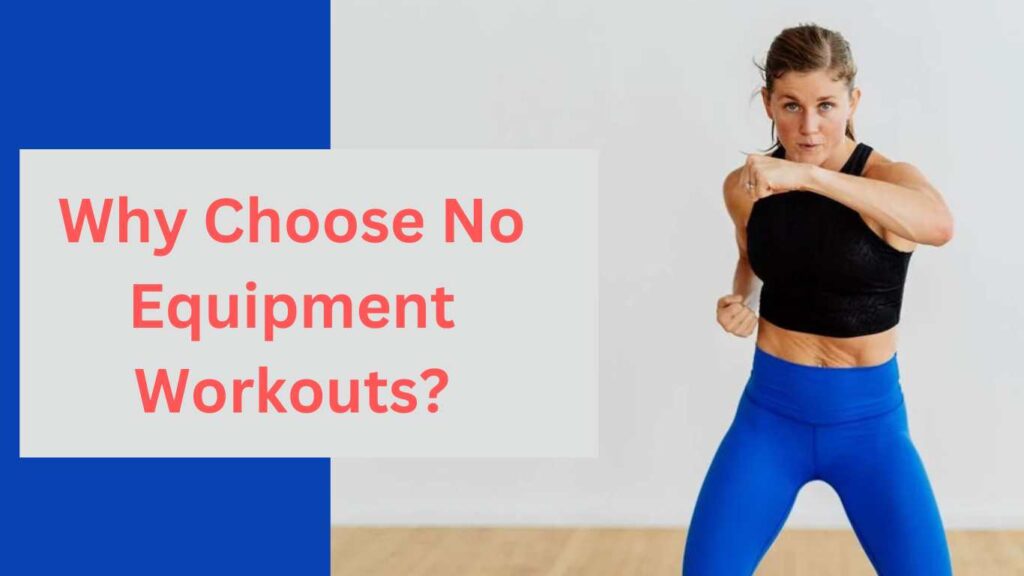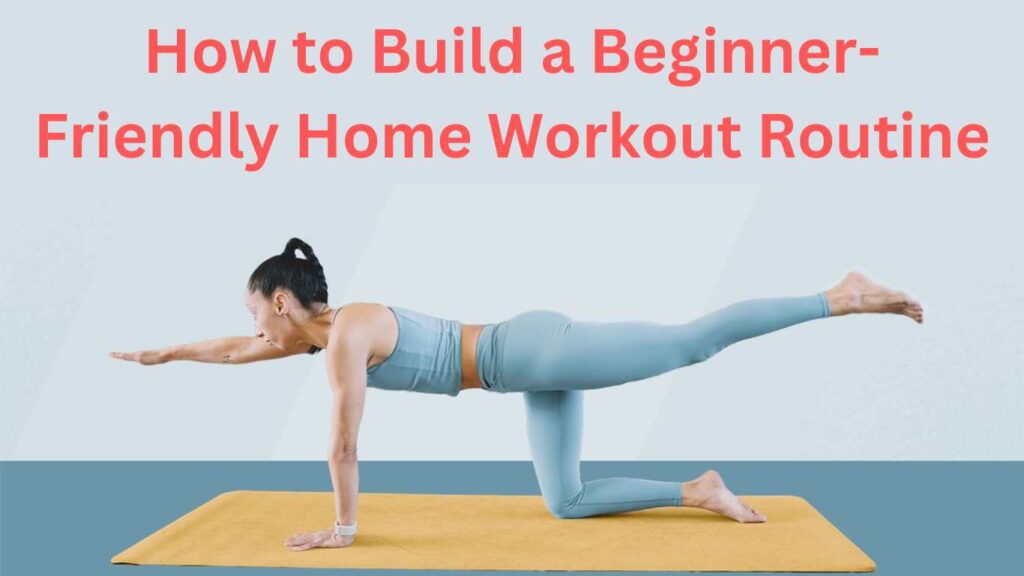Starting your fitness journey doesn’t require a gym membership or expensive equipment. Whether you’re looking to lose weight, build strength, or simply get active, home workouts with no equipment are an excellent way to begin. The best part? You can do them anytime, anywhere, without any special gear.
In this article, we’ll walk you through beginner-friendly bodyweight exercises, a complete workout plan you can follow, and tips to help you stay consistent and motivated.
Why Choose No Equipment Workouts?
Before we dive into the workouts, let’s discuss why no equipment home workouts are a great choice for beginners:

- Cost-Effective: No need to buy dumbbells, resistance bands, or other gym equipment. Your body is all you need to get started.
- Convenience: You can work out anytime in the comfort of your own home. No commute to the gym is required.
- Full-Body Fitness: Bodyweight exercises work multiple muscle groups at once, ensuring a balanced workout.
- Beginner-Friendly: No equipment exercises are great for beginners because they allow you to focus on mastering the basics of form and technique.
How to Build a Beginner-Friendly Home Workout Routine
To build a beginner-friendly home workout, we’ll use exercises that target all the major muscle groups: legs, arms, core, and back. The goal is to create a full-body workout that you can do without equipment while focusing on building strength, endurance, and flexibility.

Warm-Up (5-10 Minutes)
A proper warm-up is essential before starting any workout to prevent injury and prepare your muscles. Here’s a quick warm-up routine:
- March or Jog in Place (2 minutes): Get your heart rate up by marching or jogging in place. Swing your arms to help warm up your upper body as well.
- Arm Circles (1 minute): Stand tall and extend your arms to the sides. Make small circles with your arms, gradually increasing the size. After 30 seconds, reverse the direction.
- Leg Swings (1 minute): Stand near a wall for balance. Swing one leg forward and backward for 30 seconds, then switch to the other leg.
- High Knees (2 minutes): Jog in place while lifting your knees as high as possible, alternating legs. This will help activate your hip flexors, quads, and core.
Beginner-Friendly Full-Body Workout (No Equipment)
This simple, effective workout includes bodyweight exercises that will engage all the major muscle groups. Follow the sets and reps listed for each exercise. Rest for 30-60 seconds between each exercise to catch your breath.
1. Squats (Legs and Glutes)
Squats are one of the best exercises to build strength in your legs and glutes. It’s a functional movement that mimics everyday activities like sitting down and standing up.
- How to Perform:
- Stand with your feet shoulder-width apart, toes pointing slightly outward.
- Lower your body by bending your knees, pushing your hips back as if you’re sitting in a chair.
- Keep your chest lifted and your back neutral (avoid rounding your back).
- Lower down until your thighs are parallel to the floor, then push through your heels to return to standing.
- Reps and Sets: 3 sets of 12-15 reps
2. Push-Ups (Chest, Shoulders, and Triceps)
Push-ups are a great upper body exercise that targets your chest, shoulders, and triceps. You can modify them to your fitness level by performing them on your knees if needed.
- How to Perform:
- Start in a plank position with your hands placed slightly wider than shoulder-width apart.
- Lower your body toward the ground, keeping your elbows at a 45-degree angle from your body.
- Keep your body in a straight line from head to heels.
- Push through your palms to return to the starting position.
- Reps and Sets: 3 sets of 8-12 reps (modify on knees if necessary)
3. Glute Bridges (Glutes and Lower Back)
Glute bridges are perfect for strengthening your glutes, lower back, and core. They help with posture and can alleviate lower back pain.
- How to Perform:
- Lie on your back with your knees bent and feet flat on the floor, hip-width apart.
- Press through your heels and lift your hips toward the ceiling, squeezing your glutes at the top.
- Hold for a second, then lower your hips back down with control.
- Reps and Sets: 3 sets of 15 reps
4. Planks (Core)
Planks are a fantastic exercise for building core strength, improving posture, and enhancing stability.
- How to Perform:
- Start in a forearm plank position with your elbows directly under your shoulders and your body in a straight line from head to heels.
- Engage your core by pulling your belly button toward your spine.
- Hold the position, keeping your body as straight as possible, without letting your hips sag.
- Hold for: 20-30 seconds (3 sets)
5. Lunges (Legs and Glutes)
Lunges are excellent for building lower body strength and stability. They target the quads, hamstrings, and glutes.
- How to Perform:
- Start standing with your feet together.
- Step forward with one leg, lowering your body until both knees form 90-degree angles.
- Push off the front foot to return to standing, and then switch legs.
- Reps and Sets: 3 sets of 10-12 reps per leg
6. Superman (Lower Back and Glutes)
Superman exercises target your lower back, glutes, and shoulders. They’re perfect for building back strength and improving posture.
- How to Perform:
- Lie face down on the floor with your arms extended in front of you and your legs straight.
- Simultaneously lift your arms, chest, and legs off the ground as high as possible, squeezing your glutes and lower back muscles.
- Hold for a moment, then lower back down.
- Reps and Sets: 3 sets of 12 reps
Cool Down (5-10 Minutes)
Cooling down helps your body transition from intense activity back to a resting state. It also reduces muscle soreness and tightness.
- Standing Forward Fold: Stand with your feet hip-width apart, then slowly hinge at your hips and reach for the floor. Hold for 30 seconds.
- Child’s Pose: Kneel on the floor with your big toes touching and knees spread apart. Reach your arms forward and sit back onto your heels. Hold for 30 seconds.
- Hip Flexor Stretch: Step one foot forward and lunge into the stretch, keeping the back leg straight and pressing your hips forward. Hold for 30 seconds per side.
- Shoulder Stretch: Extend one arm across your chest and gently pull it closer to your body with the opposite arm. Hold for 20-30 seconds per side.
Tips for Staying Consistent
- Start Slow: If you’re new to working out, start with 2-3 workouts per week and gradually increase as your fitness improves.
- Track Progress: Keep a workout journal to track your progress, noting the number of sets and reps you complete each session.
- Rest and Recovery: Don’t underestimate the importance of rest. Allow at least one full rest day between workouts to let your muscles recover.
- Nutrition: Fuel your body with whole, nutrient-dense foods like fruits, vegetables, lean proteins, and whole grains to support your fitness goals.
Conclusion
No equipment workouts are a fantastic way to get fit at home, especially for beginners. By focusing on bodyweight exercises, you can improve strength, flexibility, and endurance without the need for any equipment. This beginner-friendly workout plan is easy to follow, scalable, and requires only your body and your commitment. Stay consistent, listen to your body, and enjoy the process of building a healthier, stronger you.
